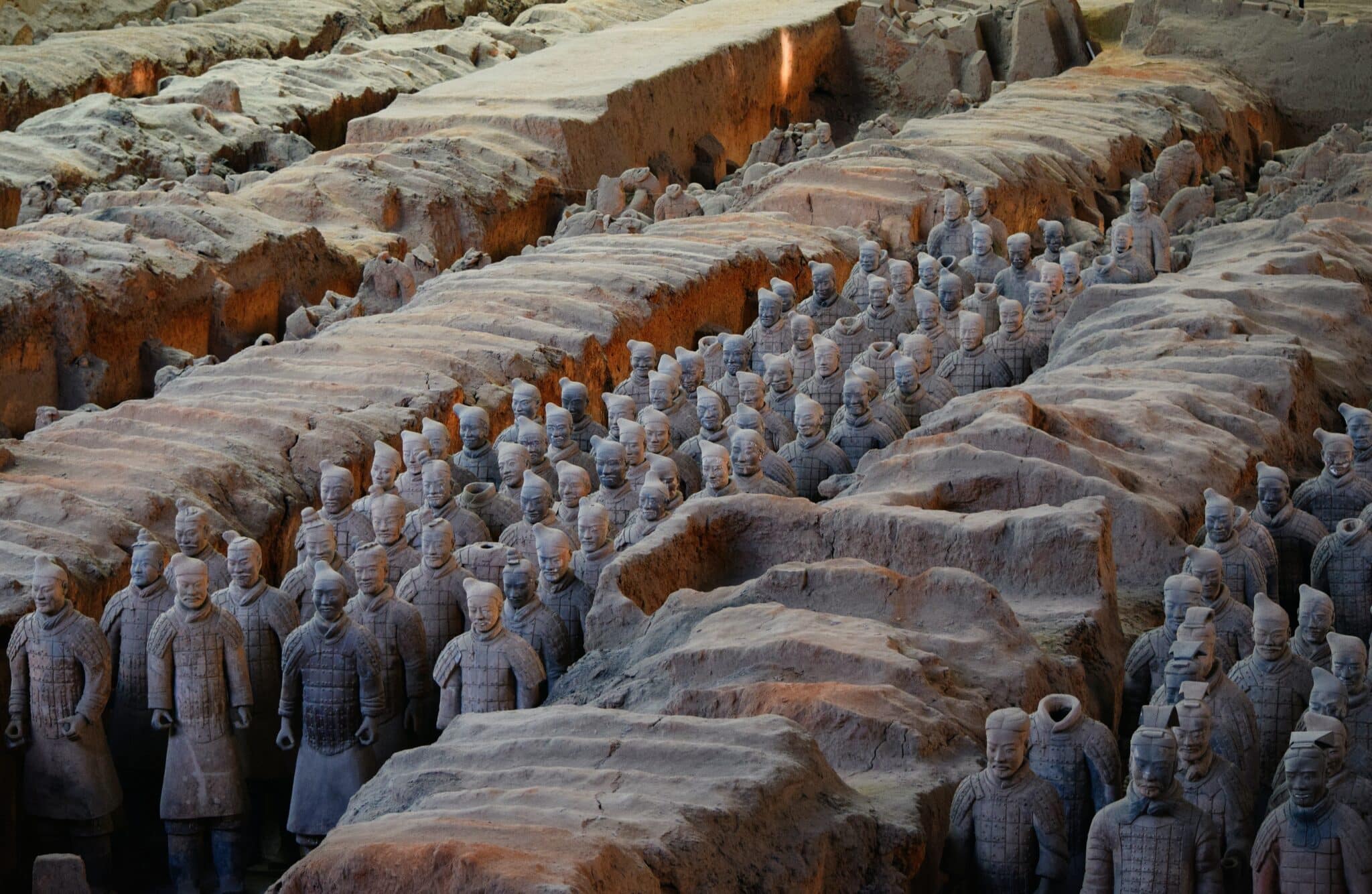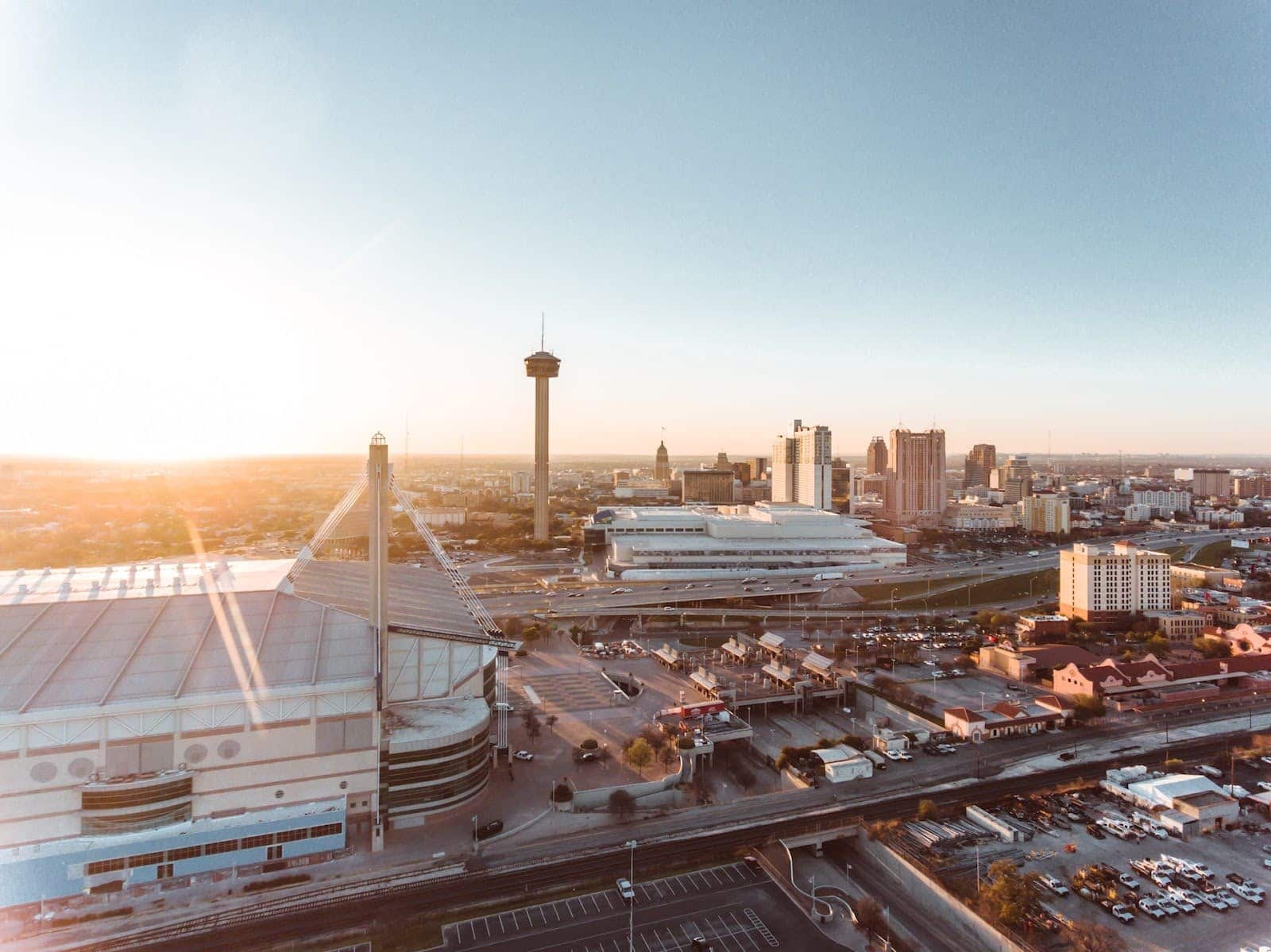Monuments in China: 4 Hidden Gems to Discover

With thousands of years of continuous habitation and a massive territory, it’s no wonder China has a wide variety of attractions. From its delicious cuisine to its natural beauty and historical monuments, China offers something for every traveler.
In fact, with 56 world heritage sites, China is only behind Italy’s 58 as the country with the most heritage sites. So, it’s fair to say that you can spend several trips just visiting China’s monuments.
Nevertheless, with so many monuments in China, choosing which ones to prioritize can be challenging. In this article, we’ll go over four hidden gems. Our list includes sprawling palace complexes that you can plan a whole trip around and majestic Buddhas in secluded caves.
Ready? Let’s get started!
Mausoleum of the First Qin Emperor
Located near Xi’an, the biggest city in Shaanxi province, the Mausoleum of the First Qin Emperor is a sprawling complex that houses an ancient “necropolis.” In other words, it’s a city of the dead, where many dignitaries were interred and revered.
Nowadays, what’s left of the mausoleum is a massive truncated pyramid that looks like an earthen hill and is being actively researched.
Here you will find the Terracotta Army, a series of pits housing more than 7,000 likenesses of warriors, horses, and chariots. Getting here is easy; you can even take a free bus ride, but it’s better to have a guided tour in English, as this is a historical site and there’s a lot to learn.
Yungang Grottoes
The Yungang Grottoes are a series of caves located near Datong, in Shaanxi Province. But these are no ordinary caves, filled with stalactites and stalagmites; these caves represent the peak of Buddhist art during the 5th to 6th centuries.
There are 20 different caves, each with unique wall carvings and statues, and they are all worth seeing. A complete tour through each of the caves takes at least four days.
Nevertheless, it’s worth mentioning that caves 9 to 13 are the highlights of this monument. They have stunning examples of polychromy; their statues maintain the original fifteen hundred year’s old color palette, and they’re simply spectacular to see. Also of note are the giant Buddhas in caves 16 to 20 and the one in cave 5, which is the largest of the complex (a stunning 17-meter-tall statue).
You can easily reach this complex by car from Datong. This city has both an airport and a bullet train station connecting it to the main cities of Northeast China, like Beijing.
Mukden Palace
The Mukden (or Shenyang) Imperial Palace was built in 1625 by Nurhachi, the first Qing Emperor. It’s located in in Shenyang, the capital of Liaoning province.
The complex was initially constructed in 1625, but multiple Qing dynasty Emperors extended it over the following two centuries.
The Mukden Palace is quite big but there are three sections that you probably won’t want to miss:
- The East section: This was the original palace complex, made in the Manchu style, with an eight-sided temple as its main building.
- The Center section: Built by Emperor Huangtaiji, this section has a classical structure, reminiscent of other palace complexes like the Forbidden City.
- The West section: This is the most modern section and it houses a large theater. It was built by Emperor Qianlong, who also made improvements to the center section.
This imperial Palace not only offers examples of Qing architecture, but also houses a wide collection of both early and late Qing relics, ranging from imperial household items to everyday objects.
Mukden Palace is an integral part of Shenyang city, so it’s really easy to reach if you are in town.
The Temple of the Five Lords
The Temple of the Five Lords is located on Hainan, an island that’s renowned for its natural beauty. This is why it’s called “The shining pearl of the South Sea.” Nevertheless, more than a thousand years ago, it was considered wild and remote, and was used as a destination for exiled court officials who had offended the emperor.
During the Ming dynasty, some of these officials were considered crucial to Hainan’s development into a Chinese province. So a temple complex was built on the island to honor these officials: The temple of the five lords.
It’s located between Haikou City and the district of Qiongshan. And actually, the Temple is a complex with multiple temples, beautiful gardens and a fountain that is said to be the first in Haikou.
The main attraction is the temple dedicated to the five lords (or mandataries, depending on the translation), with life size statues of each of them. But there are also temples dedicated to the poet Su Shi, and the two generals who captured Hainan during the Han dynasty. Of course, they’re all worth visiting. Plus, you’ll also find beautiful gardens that have been maintained for over six hundred years.
You can reach the complex via bus or car from anywhere on the island of Hainan, and it’s open all year.
When Visiting the Monuments of China, Don’t Forget About COVID Travel Restrictions
China is so ample and vast that you can spend half a lifetime discovering everything it has to offer. It has options for every one of the four seasons and for every activity you might want to partake in.
This was a brief guide, covering some hidden gems you can’t miss during your visit to China. However, there are thousands of monuments you can visit during your stay, including the classics:
- The Forbidden Palace
- The Great Wall
- The Giant Golden Buddha
All in all, there are more monuments than one trip can accommodate.
However, when arriving in China, bear in mind that COVID entry requirements were recently lifted. Inbound travelers are no longer required to show a negative COVID test before boarding their flights. Still, you’ll need to fill out a health declaration form on China’s customs website.
Passengers may be asked to perform a rapid antigen test upon arrival if:
- They show symptoms or fever
- They have an abnormal health declaration
If the test is positive, they may be advised to wear a mask and consider self-isolation while symptoms persist. Nevertheless, it’s worth mentioning that quarantine for COVID-19 is no longer mandatory.
China is currently reporting 1,000 new cases every day. So, it remains important to take the necessary precautions to protect yourself against COVID, and get tested promptly if symptoms arise.
Need a COVID test during your stay in China? No matter where you are or what test you need, find testing locations near you with our international directory.



